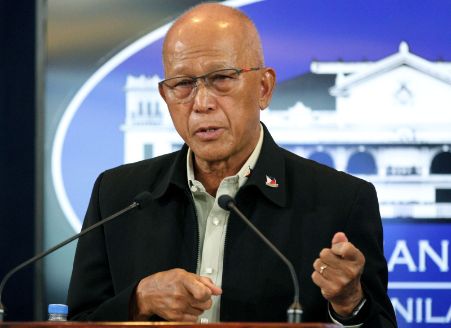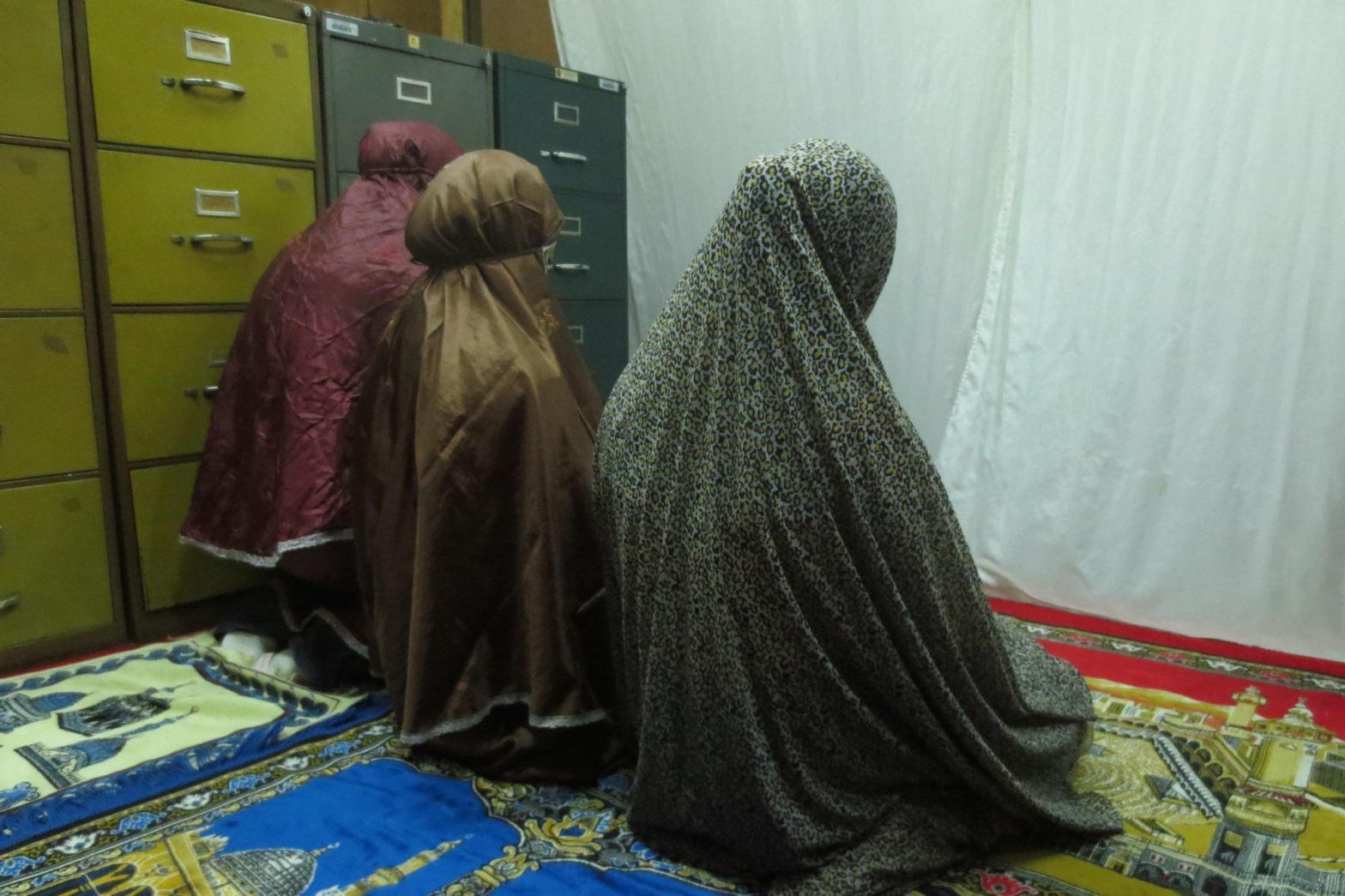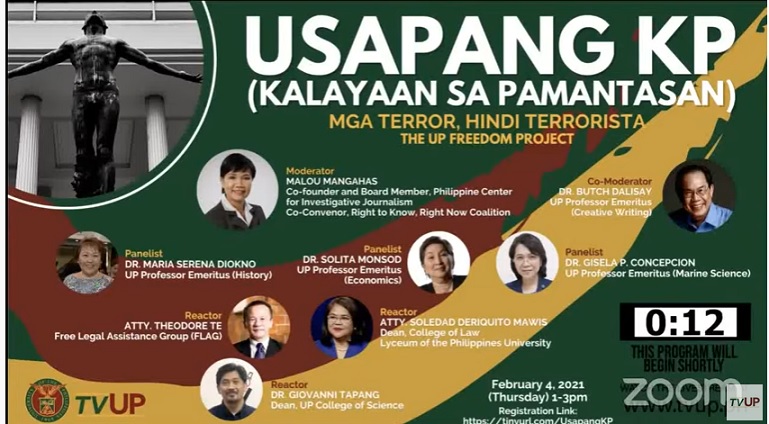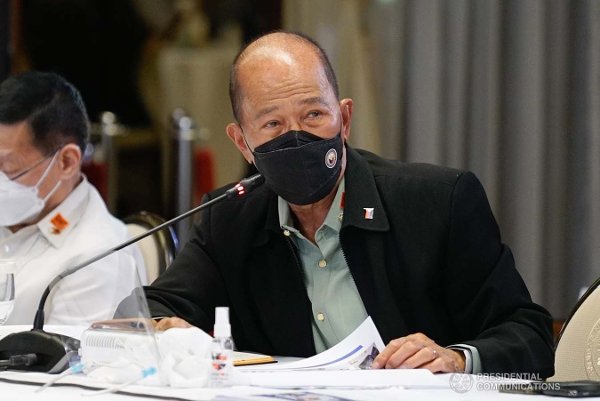In justifying the unilateral abrogation of the 1989 UP-DND Accord and the re-entry of police patrol forces in the University of the Philippines (UP) campuses to quell the alleged recruitment by communist rebels, Defense Secretary Delfin Lorenzana mistakenly claimed that every barangay in Metro Manila has a police precinct.
STATEMENT
In a press briefing on Jan. 20, two days after his letter — addressed to UP President Danilo Concepcion — terminating the accord went public, the secretary was asked if there were actual operations of law enforcement that were “hampered” because of the agreement.
He said:
“[W]e cannot even conduct any ano — ‘yung patrol ng pulis wala nga eh, kasi bawal nga eh. Magpaalam ka muna tapos sasabihin … nila siguro, ‘what is your purpose in coming here?’
(We cannot even conduct any — police patrols can’t be done there because it is prohibited. You have to ask permission [from the UP administration] first then they will perhaps say, ‘ what is your purpose in coming here?’)”
Lorenzana then said:
“Remember that UP Diliman is not only a school. It is a community. Barangay nga ‘yan eh. You go around the (sic) Metro Manila, lahat ng barangay may presinto ng pulis. Why does UP do not (sic) have this? Ah, meron silang police force. They are the only campus that have (sic) a private army na … puwede nilang utusan.”
(Remember that UP Diliman is not only a school. It is a community. It’s a barangay. You go around the (sic) Metro Manila, all barangays have police precincts. Why does UP do not (sic) have this? Ah, they have a police force. They are the only campus that have (sic) a private army that they can command.)
Source: Presidential Communications Operations Office, Press Conference of DND Sec. Delfin Lorenzana & AFP Spokesperson MGen. Edgard Arevalo January 20, 2021, Jan. 20, 2021, watch from 29:01 to 29:46
FACT
Lorenzana is wrong.
Metro Manila has only 87 police community precincts (PCPs) and 119 substations spread across 1,710 barangays in the region’s five police districts, based on the latest tally of the Philippine National Police (PNP) – National Capital Region Police Office (NCRPO), as confirmed by the Southern Police District (SPD) Public Information Office (PIO) in a text message to VERA Files on Feb. 2.
PCPs and substations follow the “same set-up” and perform the same functions, PMaj. Randy Moratalla, officer-in-charge of the SPD, told VERA Files in a separate text also on Feb. 2. These are the “lowest PNP unit” in a locality, which are in charge of various law enforcement activities for “community peacekeeping” such as patrolling.
The establishment of PCPs is dependent on the number of population in an area, land area, and the prevalence of crime incidents, PBGen. Ildebrandi Usana, PNP spokesperson, confirmed to VERA Files in a Feb. 8 text message.
“The principle that applies is to bring police services closer to the community, depending on the latter’s needs for sustained police presence in the area,” he said.
Some precincts patrol “more than three” barangays; others cover more than five, according to PCol. Jenny Tecson of the NCRPO PIO.
VERA FIles has requested for disaggregated data on PCPs and substations down to the city and municipality level within Metro Manila, but has yet to receive a response from PNP PIO as of posting.
UP’s police force
Among UP’s eight constituent universities, only UP Diliman and UP Los Baños have their own university police forces, which currently operate under the supervision of their respective Office of the Vice Chancellor for Community Affairs (OVCCA).
However, this was not always the case. Upon the abolition of the UP Security Division in 1977, UP’s Board of Regents (BOR) approved the creation of a University Police Force (UPF) under the supervision of the National Police Commission (NAPOLCOM), the same agency that exercises “administrative control and operational supervision over” the PNP.
The BOR then said the set-up of the security division, limited by its function as a private security agency, “cannot adequately provide” for the “protection of lives and property, the maintenance of peace and order, the enforcement of laws, and the suppression of crimes,” hence the need to create such police forces.
In 1983, the BOR approved the review and reorganization of the university’s administration and placed the jurisdiction of the UPF under the OVCCA.
UP officials were tasked to beef up its own security forces when the 1989 UP-DND accord was signed. This is in lieu of the provision that no member of the Armed Forces of the Philippines, the Philippine Constabulary-Integrated National Police (now PNP), or Citizen Armed Force Geographical Unit (CAFGU) would enter the premises of any UP campus or regional units without prior notification of university officials. (See VERA FILES FACT SHEET: What the unilateral termination of the UP-DND accord means)
The agreement reads in part:
“UP officials shall endeavor to strengthen UP’s own security, police and fire-fighting capabilities so as to leave no vacuum that can be exploited by malefactors or criminal elements.”
Source: Philippine Collegian, 1989 agreement of UP and DND on military and police operations in the UP system, Oct. 28, 2015
UP campuses in Manila, Cebu, Miag-ao, Tacloban, and Iloilo in Visayas all have their own security service forces. UP Mindanao, meanwhile, has a military detachment inside the campus which has existed “decades before” the constituent university was established in the area, according to UP Vice President for Public Affairs Elena Pernia.
Sources
UP Office of the Student Regent Official Twitter Account, ALERT: DND Secretary Delfin Lorenzana sent a letter to UP President Danilo Conception…, Jan. 18, 2021
Phiippine Collegian, 1989 agreement of UP and DND on military and police operations in the UP system, Oct. 22, 2015
Presidential Communications Operations Office Official Facebook Account, Press Conference of DND Sec. Delfin Lorenzana & AFP…, Jan. 20, 2021
Philippine Statistics Authority, Provincial Summary: Number of Provinces, Cities, Municipalities and Barangays By Region As of 30 September 2020, Sept. 30, 2020
Southern Police District Public Information Office (PIO), Text message to VERA Files, Feb. 2, 2021
Southern Police District officer in charge, Text message to VERA Files, Feb. 2, 2021
Directorate for Police Community Relations, Police Community Relations Manual (REVISED), Accessed Feb. 1, 2020
Philippine National Police, Text message to PNP Spokesperson PBGen. Ildebrandi Usana, Feb. 8, 2021
National Capital Region Police Office (NCRPO), Text message to VERA Files, Jan. 28, 2021
University of the Philippines, About UP, Accessed Feb. 2, 2021
Office of the Vice Chancellor for Community Affairs UP Diliman, Public Safety And Security Office, Accessed Jan. 28, 2021
Office of the Vice Chancellor for Community Affairs UP Los Baños, University Police Force (UPF), Accessed Jan. 28, 2021
UP Official Gazette, 1977 Minutes of the Meeting, Jan. 31, 1977
Official Gazette of the Philippines, Presidential Decree No. 1919, s. 1984, April 28, 1984
Official Gazette of the Philippines, Presidential Decree No. 100, s. 1973, Jan. 17, 1973
UP Official Gazette, January-March 1983, Accessed Feb. 2, 2021
Official Gazette of the Philippines, Republic Act No. 6975, Dec. 13, 1990
(Guided by the code of principles of the International Fact-Checking Network at Poynter, VERA Files tracks the false claims, flip-flops, misleading statements of public officials and figures, and debunks them with factual evidence. Find out more about this initiative and our methodology.)





